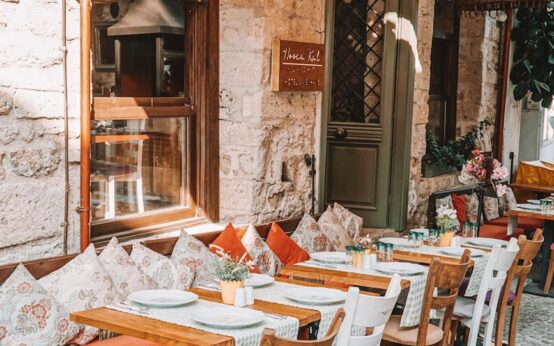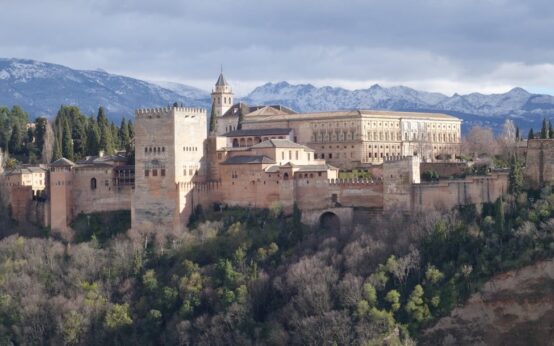Forget the Barbed Wire: A Traveler’s Guide to the World’s Most Peaceful Border Crossings
Say the words “border crossing,” and what comes to mind? For most of us, it’s a montage of long lines, stern-faced guards, intimidating concrete barriers, and a general feeling of anxiety. You clutch your passport, rehearse your answers, and hope you don’t get flagged for a random search. It’s a necessary evil of travel, a stressful hurdle to clear before the real adventure begins. But what if it didn’t have to be that way? What if a border crossing was an experience in itself—a beautiful, seamless, and even delightful part of the journey? It is. All over the globe, there are incredibly peaceful border crossings that defy the stereotype, replacing tension with tranquility and bureaucracy with beauty.
These are places where borders are marked by a simple line on the pavement, a shared library, or a breathtaking mountain pass. They’re a testament to diplomacy, friendship, and the simple idea that we’re all just people living on one big planet. Forget what you think you know. We’re about to take a journey to the frontiers of friendship, where the most difficult part of crossing over is deciding which photo to post first.
Key Takeaways:
- Peaceful border crossings often reflect strong diplomatic ties and shared cultural history between nations.
- The Schengen Area in Europe has virtually eliminated traditional border checks, creating some of the world’s most seamless crossings.
- Many of these borders are tourist attractions in their own right, featuring unique geographical markers, shared community spaces, or stunning natural landscapes.
- Preparing for any border crossing, even a peaceful one, is still crucial. Always have your documents ready.
The European Dream: Where Borders Are Just Lines on a Map
Nowhere is the concept of a peaceful border more evident than in Europe, particularly within the Schengen Area. This agreement, encompassing 27 countries, has essentially dissolved internal borders, allowing for the free movement of people. It’s a traveler’s paradise, turning what used to be a full-stop process into a simple road sign. It’s almost surreal the first time you experience it. You’re driving down a highway, and a subtle blue sign with a circle of yellow stars announces your arrival in a new country. No guards. No gates. Nothing. It’s that easy.

Baarle-Nassau & Baarle-Hertog (Netherlands & Belgium)
Let’s start with the most wonderfully bizarre border in the world. The towns of Baarle-Nassau (Dutch) and Baarle-Hertog (Belgian) aren’t just next to each other; they’re woven together in a geopolitical tapestry that’s frankly mind-boggling. The border here is not a straight line. It’s a complex system of enclaves and counter-enclaves, meaning there are pieces of Belgium completely inside the Netherlands, and even pieces of the Netherlands inside those Belgian pieces. Seriously.
What does this mean for a traveler? You can literally have one foot in Belgium and one in the Netherlands at the same time. The border is marked by white crosses on the pavement, running through streets, gardens, and even buildings. There’s a cafe where the border line runs right through the tables. You can order your coffee in the Netherlands and drink it in Belgium. The front door of a house determines its nationality, which has led to some clever architectural solutions over the years to take advantage of different tax laws. This isn’t just a border; it’s a living museum of medieval treaties and modern cooperation. There are no checks, no officials, just the delightful absurdity of hopping between countries while running errands.
The Öresund Bridge (Denmark & Sweden)
Connecting Copenhagen, Denmark, and Malmö, Sweden, the Öresund Bridge is an absolute marvel of engineering and a symbol of Scandinavian unity. This 8-kilometer bridge-and-tunnel combination is a vital artery for commuters, tourists, and commerce. While there are passport checks (both countries are in the EU, but Sweden has some temporary checks), the process is typically swift, efficient, and stunningly scenic. You drive across the magnificent cable-stayed bridge, with panoramic views of the sea, before plunging into the world’s longest underwater tunnel for the final stretch.
The experience feels less like a formal border crossing and more like a futuristic commute. The transition is seamless. One moment you’re enjoying a Danish pastry, and a short, beautiful drive later, you’re ready for Swedish Fika. It’s a powerful symbol of how two countries can be so interconnected that they invest billions to build a physical link across the sea. For travelers, it’s a must-do drive or train ride.
The Three-Country Point (Germany, Czech Republic & Poland)
While the famous Vaalserberg marks the meeting point of Germany, Belgium, and the Netherlands, there are dozens of other fascinating tripoints across Europe. One of the most accessible and peaceful is the spot near Zittau, Germany, where it meets the Czech Republic and Poland. A simple pedestrian bridge over the Lusatian Neisse river connects the German and Polish sides, and a short stroll away, you reach the Czech border.
You can stand in one spot and technically be in three places at once. Each country has placed a monument or marker, and the atmosphere is one of relaxed tourism. People walk their dogs, cycle, and picnic here. It highlights the profound change in this region, which was once a point of tension. Today, it’s a symbol of unity and open travel, where you can have breakfast in Poland, lunch in Germany, and dinner in the Czech Republic, all without breaking a sweat.
North American Neighbors: More Than Just a Line
The border between the United States and Canada is the longest international border in the world. While major crossings near big cities can be busy, the vast stretch of this border is home to some remarkably quiet, friendly, and quirky crossings.
The Haskell Free Library and Opera House (Derby Line, Vermont, USA & Stanstead, Quebec, Canada)
This is, without a doubt, one of the most unique border situations on the planet. The Haskell Free Library and Opera House was deliberately built straddling the US-Canada border in 1904 to foster unity between the two communities. A thick black line runs across the floor of the reading room and diagonally across the opera house stage. The library entrance is in the US, but the bookshelves and the opera house seats are mostly in Canada. You don’t need a passport to enter, but you must return to your country of origin upon leaving. It’s a place where international law meets small-town charm. The guards from both sides know the rules, and the whole situation operates on a level of trust and community spirit that is truly heartwarming. It’s a border crossing where the main attraction is a shared love of books and culture.

Waterton-Glacier International Peace Park (Alberta, Canada & Montana, USA)
How about a border crossing that’s also a UNESCO World Heritage Site? In 1932, the Rotary Clubs of Alberta and Montana proposed joining Waterton Lakes National Park in Canada with Glacier National Park in the US. The result was the world’s first International Peace Park, a symbol of the enduring friendship between the two nations. The border itself runs through the spectacular Rocky Mountains.
While you still have to go through an official Port of Entry (the Chief Mountain crossing is a popular one, known for its breathtaking views), the entire experience is framed by cooperation and shared natural beauty. The park is managed collaboratively, and the spirit of peace is palpable. You’re not just crossing a border; you’re moving through a single, magnificent ecosystem that knows no political boundaries. The guards here are often more like park rangers, happy to give you tips on hiking trails or wildlife sightings. It’s one of the most scenic and inspiring peaceful border crossings you’ll ever encounter.
“Travel is fatal to prejudice, bigotry, and narrow-mindedness, and many of our people need it sorely on these accounts. Broad, wholesome, charitable views of men and things cannot be acquired by vegetating in one little corner of the earth all one’s lifetime.” – Mark Twain
Crossings in South America & Asia: Adventure with a Smile
While some borders in these regions can be notoriously challenging, there are also many that are surprisingly relaxed and set against jaw-dropping landscapes. These crossings often offer a more adventurous, off-the-beaten-path feel.
Paso de Jama (Argentina & Chile)
Crossing the Andes is always an adventure, and the Paso de Jama is one of the highest and most beautiful road crossings between Argentina and Chile. Reaching an altitude of over 4,800 meters (15,750 feet), this isn’t for the faint of heart. But the reward is out-of-this-world scenery. You’ll drive past shimmering salt flats, turquoise lagoons frequented by flamingos, and surreal desert landscapes that look like they belong on Mars.
The border facilities themselves are consolidated into a single, modern building on the Chilean side, where both Argentine and Chilean officials work side-by-side. This integrated system makes the process incredibly efficient. Given the remote location, the atmosphere is professional yet relaxed. The guards are used to seeing awe-struck tourists and are generally friendly and helpful. The sheer scale and desolation of the landscape put everything in perspective—out here, national boundaries seem like a tiny human concept against the power of nature.
Sixaola-Guabito (Costa Rica & Panama)
For a taste of a rustic, tropical border crossing, look no further than the bridge over the Sixaola River. For years, this crossing involved walking over a rickety old railway bridge—a true backpacker rite of passage. While a modern, sturdy bridge has since been built for vehicles and pedestrians, the vibe remains distinctly laid-back. This crossing connects the Caribbean coasts of both countries, a popular route for travelers exploring the region’s beaches and rainforests.
You’ll walk from the Costa Rican immigration office, across the bridge with views of the lush jungle and river below, to the Panamanian office on the other side. It’s often hot, humid, and filled with the sounds of the jungle. Officials are accustomed to tourists and the process is straightforward, though sometimes subject to the relaxed pace of ‘island time’. It feels a world away from a sterile airport terminal. It’s a border crossing with character, a small adventure that perfectly sets the tone for exploring the Caribbean side of Central America.

Conclusion
The world’s most peaceful border crossings are more than just transit points. They are destinations. They tell stories of friendship, of shared history, and of nature’s refusal to recognize our man-made lines. They remind us that for all our differences, we have a profound capacity for cooperation and harmony. So next time you plan a trip, think about the journey between the destinations. Seek out these special places where crossing from one country to another is not a source of stress, but a moment of wonder. You might just find that the most memorable part of your adventure is the line you cross to get there.
FAQ
- Do I still need my passport and visa for these peaceful border crossings?
- Absolutely! While the atmosphere may be relaxed, you are still crossing an international border. Always have your passport, and any required visas, ready. The ‘peaceful’ nature refers to the atmosphere and efficiency, not a lack of rules. The only major exception is within the Schengen Area for EU/Schengen citizens.
- What makes a border crossing ‘peaceful’ or ‘easy’?
- Several factors contribute. Strong diplomatic relations are key. In places like the EU’s Schengen Area, political agreements have removed checks altogether. In other areas, it might be an integrated customs process (where both countries’ agents work in one building), a low volume of traffic, friendly and professional staff, and a setting that is scenic rather than intimidating.
- Can I take photos at these borders?
- This varies greatly. At borders that are also tourist attractions, like Baarle-Hertog/Nassau or the Haskell Library, photography is generally welcome and even encouraged. However, at official border posts, even friendly ones, you should always be cautious. Taking photos of government buildings, security infrastructure, or personnel is often prohibited. When in doubt, always ask an official first. It’s better to be safe than sorry.



 Turn Your Layover into a Mini-Retreat: The Ultimate Guide
Turn Your Layover into a Mini-Retreat: The Ultimate Guide  Mindful Eating While Traveling: Savor Every Bite on the Go
Mindful Eating While Traveling: Savor Every Bite on the Go  Faroe Islands: Guide to its Untamed, Serene Beauty
Faroe Islands: Guide to its Untamed, Serene Beauty  Discover the Joy of an Early Morning Walk in the City
Discover the Joy of an Early Morning Walk in the City  Islamic Gardens: A Paradise of Calming Symmetry
Islamic Gardens: A Paradise of Calming Symmetry  Best Plein Air Painting Destinations | Artist’s Guide
Best Plein Air Painting Destinations | Artist’s Guide  NFT Photography: A Photographer’s Guide to a New Market
NFT Photography: A Photographer’s Guide to a New Market  AI and Blockchain: A Powerful Tech Synergy
AI and Blockchain: A Powerful Tech Synergy  Get a Job in Blockchain: Your 2024 Web3 Career Guide
Get a Job in Blockchain: Your 2024 Web3 Career Guide  Wallet Types Explained: Hot vs Cold & More (2024 Guide)
Wallet Types Explained: Hot vs Cold & More (2024 Guide)  How Venture Capital is Shaping the Crypto Industry
How Venture Capital is Shaping the Crypto Industry  Sentiment Analysis for Crypto: A Trader’s Ultimate Guide
Sentiment Analysis for Crypto: A Trader’s Ultimate Guide